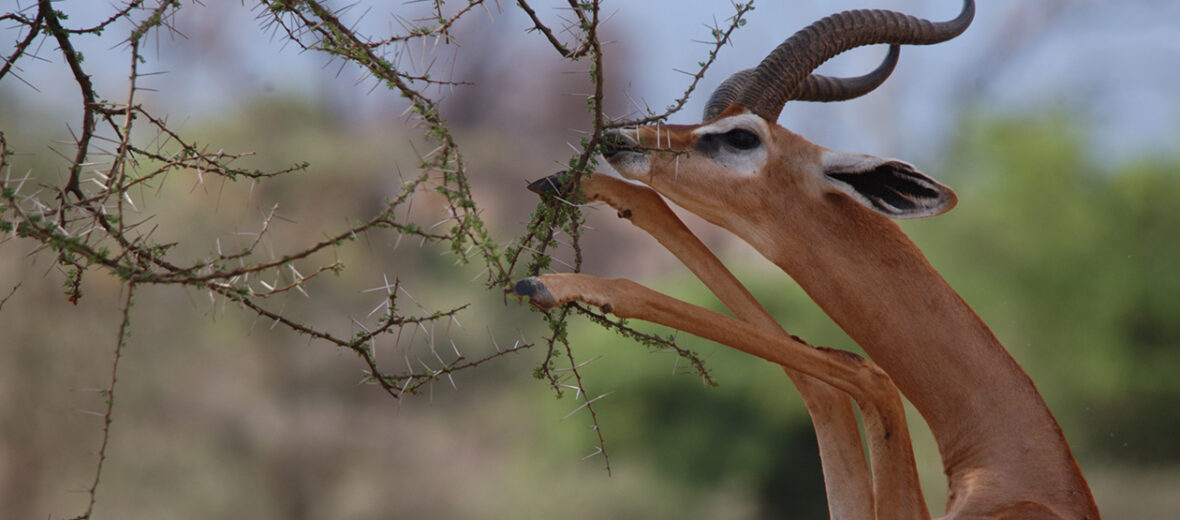
Belonging to the bovid family, the gerenuk can be found in the Eastern parts of Africa in semi-arid areas, deserts, and dry bushy savannas. Their populations are dropping due to unregulated hunting and habitat loss, due to agriculture and competing cattle overgrazing. These critters are listed as Near Threatened by the IUCN.
First the Stats…
Scientific name: Litocranius walleri
Weight: Up to 115 lbs.
Length: Up to 4.9 feet
Height: Up to 41 inches
Lifespan: Up to 15 years
Now on to the Facts!
1.) The name “gerenuk” is a Somali word which means “giraffe-necked”.
2.) The males are armed with short, S-shaped, ringed, backward curved horns.
3.) These critters are diurnal (active during the day).
4.) Like other undulates (hoofed animals), they are herbivores (eat plant matter). They eat leaves, shoots, flowers, and vines.
5.) The gerenuk feeds while standing on their hind feet. They erect their body to grab leaves from the branches that can be up to 6+ feet from the ground.
But wait, there’s more on the gerenuk!
6.) Their primary predators are leopards, lions, cheetahs, jackals and wild dogs.
7.) Gerenuks live in gender specific herds that typically only come together during mating season.
Did you know…?
A gerenuk can go its entire life without drinking water!
8.) The gerenuk has pre-orbital glands in the front of their eyes that produce a tar-like, strong-scented substance that they then deposit on bushes and other vegetation to mark their territory.
9.) Females birth a single fawn after up to a 7 month gestation (pregnancy).
10.) After feeding, mom will clean their calve and consume the remainder of the food so as not to attract predators.
Now a Short Gerenuk Video!
Also, check out the Critter Science YouTube channel. Videos added frequently!
Want to suggest a critter for me to write about? Let me know here.



